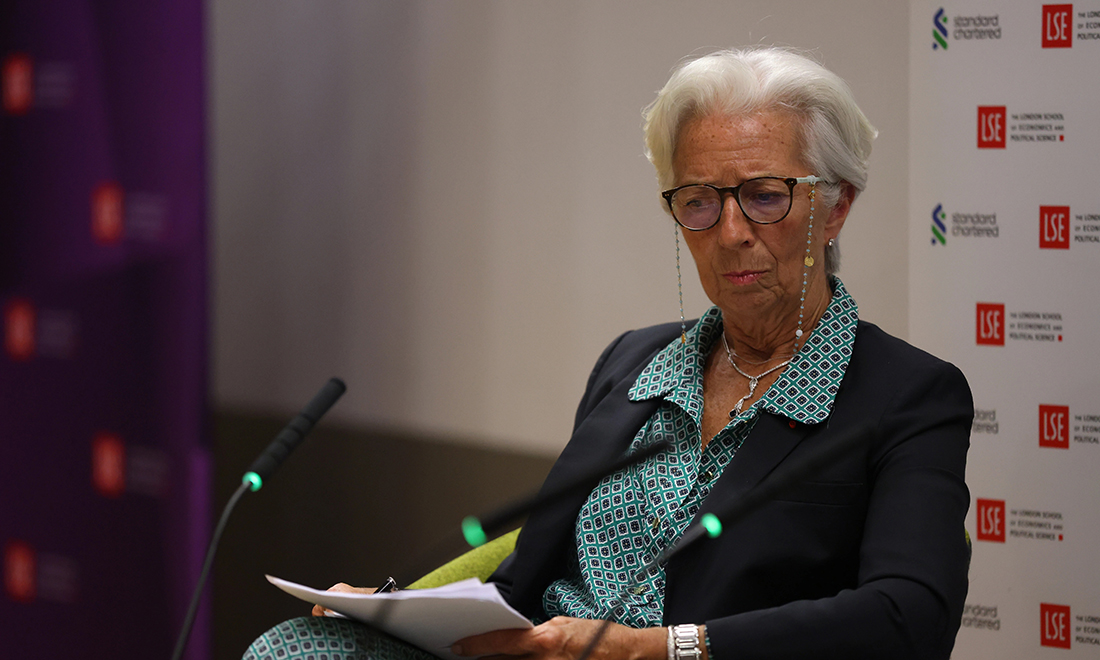加密货币有金融风险,稳定币也不稳定

由于受到2022年熊市的影响,投资者进入了偃旗息鼓的状态,加密货币市场也降到了谷底。
有鉴于通胀创40年以来的新高,经济衰退恐惧情绪不断蔓延,能源危机给欧洲造成了严重破坏,股票和债券价格纷纷下跌,像加密货币这样的风险资产处于崩溃边缘。
自2021年11月以来,全球加密货币的总市值蒸发了2万亿美元,7月11日,整个“加密货币的市值”仅为9100亿美元。市值处于前两位的比特币(Bitcoin)和以太币(Ether)自年初至今的降幅分别达到了57%和70%。
加密货币价格近期的下探,连同算法稳定币TerraUSD的下滑,让欧洲央行直呼看不下去,不过这也实属正常。
在一篇剖析加密货币过去10年增长历程的新报告中,欧洲中央银行(European Central Bank)的研究人员称,人们应该对这个行业进行规范,以防止给传统市场带来“外溢效应”。
欧洲央行的研究员亚历山德拉·博恩与何塞普·文德雷尔·西蒙写道:“来自于加密货币的金融稳定风险正在上升,可能会达到系统性的临界点。鉴此,我们有必要对加密货币资产市场进行规范和监管。”
在这份新报告发布之前,欧盟在今年5月通过的“加密货币资产市场”(Markets in Crypto-Assets,简称“MiCa”)监管框架为加密货币公司在欧洲的经营方式提供了指引。该框架有望于2024年立法,但欧洲央行的行长克里斯蒂娜·拉加德在6月表示,可能有必要在这之前就出台更多的规定。
拉加德长期以来一直都是加密货币的批评者,她甚至在5月的德国脱口秀节目“College Tour”中称加密货币一文不值。
这位欧洲央行的行长呼吁监管方开始研究针对MiCa II的提案,她说此举将从更深层次以及“更大范围”帮助规范加密货币资产,以预防欺诈和“犯罪交易”。
稳定币与去中心化金融
欧洲央行在最近的报告中还提到了稳定币与去中心化金融,研究员称,稳定币还不足以替代“实体经济中的各种实用支付方式。”
他们说:“到目前为止,事实证明,稳定币的交易速度和成本,及其兑换政策和条件,还不足以用于实体经济的支付用途。”
欧洲央行的团队还表示,有必要出台“全面和协调一致”的法规来预防类似于TerraUSD的新稳定币崩盘。研究人员称,如果其中一种规模较大的稳定币出现挤兑或崩盘现象,它可能就会具有“传染效应”,并成为“一种金融稳定性风险”。
欧洲央行还在报告中批评了去中心化金融缺乏使用案例及其给投资者带来的风险。
他们写道:“在很大程度上,它并没有打造全新的金融产品,而是通过技术驱动的创新,模仿那些传统金融市场上已有的产品。去中心化金融在很多方面都存在传统金融的弱点。”
欧洲央行的研究员还表示,去中心化金融的新技术和去中心化方式可能会“放大某些弱点,并带来额外的特定风险”。
他们总结说:“去中心化金融需要进行有效的监管和规范。”
去中心化生态系统在过去几个月中蒸发了数十亿美元的市值,而投资者对其他稳定币灾祸的恐惧情绪依然笼罩着这个行业。
DeFi Pulse的数据显示,如今,全球去中心化金融系统“锁定的总价值”已经从2021年11月的1070多亿美元下降到目前的约400亿美元。(财富中文网)
译者:冯丰
审校:夏林
由于受到2022年熊市的影响,投资者进入了偃旗息鼓的状态,加密货币市场也降到了谷底。
有鉴于通胀创40年以来的新高,经济衰退恐惧情绪不断蔓延,能源危机给欧洲造成了严重破坏,股票和债券价格纷纷下跌,像加密货币这样的风险资产处于崩溃边缘。
自2021年11月以来,全球加密货币的总市值蒸发了2万亿美元,7月11日,整个“加密货币的市值”仅为9100亿美元。市值处于前两位的比特币(Bitcoin)和以太币(Ether)自年初至今的降幅分别达到了57%和70%。
加密货币价格近期的下探,连同算法稳定币TerraUSD的下滑,让欧洲央行直呼看不下去,不过这也实属正常。
在一篇剖析加密货币过去10年增长历程的新报告中,欧洲中央银行(European Central Bank)的研究人员称,人们应该对这个行业进行规范,以防止给传统市场带来“外溢效应”。
欧洲央行的研究员亚历山德拉·博恩与何塞普·文德雷尔·西蒙写道:“来自于加密货币的金融稳定风险正在上升,可能会达到系统性的临界点。鉴此,我们有必要对加密货币资产市场进行规范和监管。”
在这份新报告发布之前,欧盟在今年5月通过的“加密货币资产市场”(Markets in Crypto-Assets,简称“MiCa”)监管框架为加密货币公司在欧洲的经营方式提供了指引。该框架有望于2024年立法,但欧洲央行的行长克里斯蒂娜·拉加德在6月表示,可能有必要在这之前就出台更多的规定。
拉加德长期以来一直都是加密货币的批评者,她甚至在5月的德国脱口秀节目“College Tour”中称加密货币一文不值。
这位欧洲央行的行长呼吁监管方开始研究针对MiCa II的提案,她说此举将从更深层次以及“更大范围”帮助规范加密货币资产,以预防欺诈和“犯罪交易”。
稳定币与去中心化金融
欧洲央行在最近的报告中还提到了稳定币与去中心化金融,研究员称,稳定币还不足以替代“实体经济中的各种实用支付方式。”
他们说:“到目前为止,事实证明,稳定币的交易速度和成本,及其兑换政策和条件,还不足以用于实体经济的支付用途。”
欧洲央行的团队还表示,有必要出台“全面和协调一致”的法规来预防类似于TerraUSD的新稳定币崩盘。研究人员称,如果其中一种规模较大的稳定币出现挤兑或崩盘现象,它可能就会具有“传染效应”,并成为“一种金融稳定性风险”。
欧洲央行还在报告中批评了去中心化金融缺乏使用案例及其给投资者带来的风险。
他们写道:“在很大程度上,它并没有打造全新的金融产品,而是通过技术驱动的创新,模仿那些传统金融市场上已有的产品。去中心化金融在很多方面都存在传统金融的弱点。”
欧洲央行的研究员还表示,去中心化金融的新技术和去中心化方式可能会“放大某些弱点,并带来额外的特定风险”。
他们总结说:“去中心化金融需要进行有效的监管和规范。”
去中心化生态系统在过去几个月中蒸发了数十亿美元的市值,而投资者对其他稳定币灾祸的恐惧情绪依然笼罩着这个行业。
DeFi Pulse的数据显示,如今,全球去中心化金融系统“锁定的总价值”已经从2021年11月的1070多亿美元下降到目前的约400亿美元。(财富中文网)
译者:冯丰
审校:夏林
The bear market of 2022 is sending investors into hibernation, and the crypto market is in the deepest part of the cave.
With inflation raging at a 40-year high, recession fears spreading, and an energy crisis wreaking havoc in Europe, stocks and bonds are falling, and risk assets like crypto are on the verge of a collapse.
Since November of last year, the crypto industry has lost more than $2 trillion in value, leaving the overall “crypto market cap” at just $910 billion on July 11. The two leading cryptocurrencies by market cap, Bitcoin and Ether, are now down 57% and 70%, respectively, year-to-date.
This recent drop in crypto prices, along with the downfall of the algorithmic stablecoin TerraUSD, has Europe’s central bank saying enough is enough, or it should be.
In a new report that dissects the growth of the crypto market over the past decade, European Central Bank (ECB) researchers said the industry needs to be regulated in order to prevent “spillover effects” on traditional markets.
“Financial stability risks from crypto-assets are rising and could reach a systemic threshold,” ECB researchers Alexandra Born and Josep M. Vendrell Simón wrote. “Crypto-asset markets thus need to be effectively regulated and supervised.”
This new report comes after the E.U.’s May approval of the Markets in Crypto-Assets (MiCa) regulatory framework that offers guidance on how crypto companies should operate in Europe. MiCa is expected to come into law in 2024, but ECB President Christine Lagarde said in June that more regulation will likely be needed before then.
Lagarde has long been a crypto critic, even going so far as to call cryptocurrencies worthless in a May interview with a Dutch talk show called “College Tour.”
The ECB president has called on regulators to begin work on a proposal for MiCa II, which she says will help to regulate crypto assets in a more “in-depth” way and with a “larger scope” in order to prevent fraud and “criminal dealings.”
Stablecoins and DeFi
The ECB went after stablecoins and DeFi, or decentralized finance, in their latest report as well, with researchers arguing that stablecoins “fall short of what is required of practical means of payment in the real economy.”
“To date, stablecoins’ transaction speed and cost, as well as their redemption terms and conditions, have proven inadequate for use in real economy payments,” they said.
The ECB team added that “holistic and coordinated” regulation is needed to prevent another stablecoin blow-up like TerraUSD. If there is a run-on or failure of one of the larger stablecoins, it could cause “contagion effects” and become “a risk to financial stability,” the researchers said.
The ECB also criticized DeFi for its lack of use cases and the risk it poses to investors in the report.
“To a large extent, it does not create novel financial products, but mimics those provided in traditional financial markets through technology-enabled innovation,” they wrote. “DeFi is in many ways subject to the same vulnerabilities as traditional finance.”
ECB researchers added that DeFi’s new technologies and decentralized approach can “amplify certain vulnerabilities and incur additional specific risks” as well.
“DeFi needs to be effectively supervised and regulated,” they concluded.
DeFi ecosystems have lost billions in value over the past few months, as investor fears over another stablecoin mishap continue to hurt sentiment in the space.
There is now roughly $40 billion in “total value locked” on DeFi ecosystems worldwide, according to data from DeFi pulse. That’s down from over $107 billion in November of last year.













